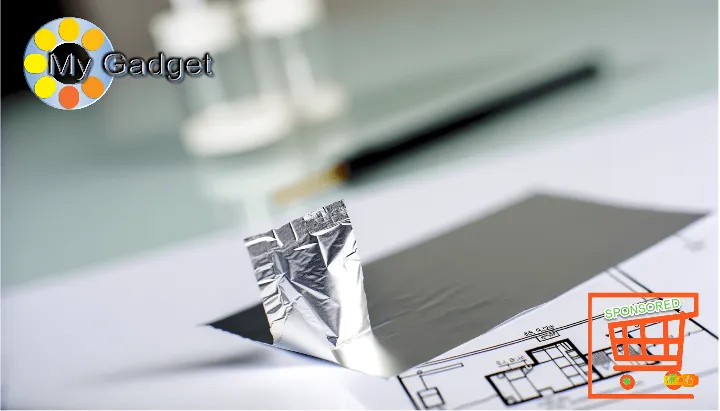Aluminum Foil for Battery Cathode Substrate
The pursuit of advanced materials for energy storage solutions has led to innovative approaches in the design and fabrication of battery components.
Among these, Aluminum Foil for Battery Cathode Substrate has emerged as a promising substrate for battery cathodes, offering a combination of lightweight properties, excellent conductivity, and cost-effectiveness.
As the demand for high-performance batteries continues to escalate, particularly in the realms of electric vehicles and renewable energy systems, the role of aluminum as a cathode substrate warrants in-depth exploration.
This article delves into the advantages of using aluminum foil in battery applications, examining its structural integrity, thermal stability, and electrochemical performance.
Additionally, we will discuss the recent advancements in manufacturing techniques that enhance the functionality of aluminum as a substrate material, including surface treatments and alloy compositions.
By evaluating current research and practical implementations, this article aims to provide insights into how aluminum foil can contribute to the next generation of battery technologies, ultimately supporting the global transition towards sustainable energy solutions.
As the industry continues to evolve, understanding the potential of aluminum foil will be essential for researchers, manufacturers, and policymakers alike, as they seek to optimize energy storage systems for a cleaner and more efficient future.
Table of Contents Aluminum Foil for Battery Cathode Substrate
Aluminum foil enhances battery performance significantly
The integration of aluminum foil as a substrate in battery technology has shown substantial improvements in performance metrics such as conductivity, energy density, and cycling stability.
This material’s lightweight nature contributes to overall reductions in battery weight, making it particularly advantageous for applications in electric vehicles and portable electronics.
Furthermore, the high conductivity of aluminum facilitates efficient electron flow, which is crucial for enhancing the power output and longevity of batteries.
Research indicates that the unique structural properties of aluminum foil allow for better electrode design and optimization, leading to increased surface area and improved ion diffusion.
This results in faster charge and discharge rates, critical for meeting the demands of modern energy storage solutions.
The compatibility of aluminum with various cathode materials also opens up avenues for innovative battery chemistries, further enhancing the potential for next-generation energy systems.
This advancement underscores the importance of selecting the right materials to drive improvements in battery performance and sustainability.
Lightweight substrate improves energy efficiency
The adoption of lightweight substrates in battery construction not only optimizes performance but also significantly enhances energy efficiency.
By reducing the overall mass of the battery system, these substrates minimize the energy required for movement in applications such as electric vehicles, directly contributing to longer operational ranges on a single charge.
Furthermore, the lightweight nature of the substrate allows for a more efficient energy-to-weight ratio, which is essential in achieving higher energy densities without compromising the structural integrity of the battery components.
In addition to weight reduction, the thermal management capabilities of these advanced substrates help to maintain optimal operating temperatures, thereby improving the efficiency of the battery’s electrochemical reactions.
Enhanced thermal stability ensures that the battery performs effectively under varying conditions, which is vital for both safety and longevity.
As a result, incorporating lightweight materials in battery design not only promotes energy conservation but also supports the development of more sustainable energy solutions across various industries.
Excellent conductivity supports high energy output
The incorporation of highly conductive materials within battery systems is pivotal in maximizing energy output, facilitating faster electron transfer during charging and discharging cycles.
This diminished resistance not only accelerates energy flow but also allows for sustained high-performance levels, which is crucial for applications demanding rapid energy delivery, such as electric vehicles and high-power electronics.
By optimizing the conductive pathways, these materials significantly enhance the battery’s overall efficiency, enabling it to deliver higher power output without overheating or degrading rapidly.
Moreover, superior conductivity contributes to a more uniform distribution of current across the battery’s surface, reducing the likelihood of localized hotspots that can lead to performance inefficiencies or safety hazards.
This uniformity supports longer cycle life and better performance consistency, which are imperative for modern energy storage solutions.
As a result, the integration of such conductive substrates is essential for developing next-generation battery technologies that meet the increasing demands for efficiency, reliability, and power.
Corrosion resistance extends battery lifespan
The durability of battery components is significantly influenced by their resistance to corrosion, which plays a critical role in prolonging the lifespan of energy storage systems.
Corrosion can lead to material degradation and compromise the integrity of battery cells, ultimately resulting in diminished performance and efficiency.
By utilizing materials with enhanced corrosion resistance, batteries can maintain their structural and functional integrity over extended periods, reducing the frequency of replacements and maintenance needs.
Furthermore, effective corrosion resistance not only ensures reliable performance but also contributes to the overall safety of battery systems.
By mitigating the risk of failure modes associated with corrosion, such as short circuits and electrolyte leakage, the longevity and reliability of batteries are substantially improved.
This resilience is particularly vital for applications requiring high levels of dependability, such as renewable energy storage and electric vehicles, where unexpected failures can lead to significant operational setbacks.
Cost-effective material for widespread usage
The selection of materials that balance both cost and performance is essential for the broad adoption of advanced technologies, particularly in energy storage solutions.
By focusing on cost-effective alternatives that can deliver required mechanical and electrochemical properties, manufacturers can produce batteries that are not only affordable but also meet the increasing demands for energy efficiency and longevity.
Such materials facilitate scalable production processes, ultimately lowering the barrier for market entry and expanding accessibility for consumers and industries alike.
In addition, the integration of cost-effective materials can lead to significant reductions in overall production costs, which can be passed along to end-users.
This economic benefit encourages further investment in research and development, fostering innovation in battery technology.
As industries continue to seek sustainable energy solutions, the emphasis on materials that provide both economic viability and performance efficiency will play a critical role in shaping the future of energy storage systems.
Enables faster charging and discharging rates
The ability to achieve rapid charging and discharging rates is critical in enhancing the performance of energy storage systems, allowing for immediate power delivery when required.
This characteristic not only improves the user experience by reducing downtime during charging but also enables applications in high-demand environments, such as electric vehicles and renewable energy systems.
By optimizing the battery’s architecture and material selection, manufacturers can significantly enhance ionic conductivity and electron transfer, leading to improved electrochemical performance.
Moreover, faster charging and discharging capabilities can contribute to the overall efficiency of energy management systems.
This is particularly beneficial for grid applications, where the ability to quickly absorb or release energy helps stabilize supply and demand fluctuations.
As the demand for efficient and responsive energy storage solutions continues to rise, the development of materials that support rapid energy exchange will be paramount in driving the next generation of battery technologies.
Compatible with various battery technologies available
The versatility of modern battery technologies is essential for expanding the potential applications in energy storage and transportation.
The integration of substrates that can accommodate diverse chemistries—such as lithium-ion, nickel-metal hydride, and more recently developed solid-state batteries—ensures broader compatibility across different systems.
This adaptability allows manufacturers to optimize performance based on specific energy requirements, operating conditions, and economic considerations.
Such flexibility not only enhances the lifecycle and efficiency of the batteries but also supports innovation in emerging fields, including electric mobility and renewable energy integration.
Furthermore, the alignment with various battery technologies aids in streamlining the supply chain and reducing production costs.
As manufacturers increasingly prioritize sustainability and resource efficiency, the ability to utilize a single substrate across multiple battery platforms can simplify the manufacturing process and minimize material waste.
This approach not only accelerates the development of next-generation energy storage solutions but also fosters a more sustainable and economically viable battery ecosystem, essential for meeting the growing global energy demands.
Reduces weight without compromising durability
Achieving an optimal balance between weight reduction and durability is critical in the development of advanced battery substrates.
Utilizing innovative materials that maintain structural integrity while minimizing mass can lead to significant improvements in battery performance and efficiency.
This dual advantage enhances the energy density of the battery, allowing for lighter designs that do not sacrifice resilience or longevity, thus fostering applications in sectors such as electric vehicles where weight is a critical factor.
Incorporating lightweight materials not only contributes to improved energy efficiency but also facilitates better handling and installation processes, translating to lower overall manufacturing costs.
The ability to streamline the design without compromising on strength or reliability paves the way for more competitive and sustainable energy storage solutions.
As industries increasingly demand high-performance components that align with environmental standards, the focus on lightweight yet durable substrates becomes paramount in driving innovation and meeting market needs.
Eco-friendly option for sustainable production
the principles of sustainability, the adoption of environmentally responsible materials is becoming essential.
By prioritizing the use of recyclable and non-toxic substances in production processes, manufacturers can significantly reduce their ecological footprint.
This approach not only minimizes waste but also encourages a circular economy, where materials are repurposed rather than discarded.
As stakeholders become more environmentally conscious, the integration of such eco-friendly practices can enhance brand reputation and consumer trust.
Additionally, the shift towards sustainable materials in battery manufacturing contributes to the broader goal of reducing greenhouse gas emissions.
By selecting components that are energy-efficient in both production and use, the entire lifecycle of the battery can be optimized for lower environmental impact.
This commitment to sustainability not only meets regulatory demands but also positions companies as leaders in innovation, appealing to a market that increasingly values eco-conscious choices.
Emphasizing sustainable production methods will likely play a pivotal role in shaping the future of energy storage technologies.
Provides reliable support for cathode structures
The structural integrity and performance of battery cathodes are critical to the overall efficiency and longevity of energy storage systems.
Utilizing suitable substrates is essential to ensure that cathodes maintain their shape, conductivity, and stability during operation.
High-quality materials that offer excellent mechanical strength and electrical conductivity serve as a robust foundation, enabling the cathode to withstand the thermal and electrochemical stresses encountered during charge and discharge cycles.
Incorporating advanced substrates into cathode designs can significantly enhance the performance metrics of batteries, such as energy density, cycle life, and safety.
By providing a reliable framework, these substrates contribute to improved ionic transport and electron flow, resulting in better overall efficiency of the energy storage device.
Furthermore, the right choice of substrate can facilitate the development of lighter, thinner, and more energy-dense batteries, addressing the growing demands for compact and efficient power solutions across various applications.
In conclusion, the use of aluminum foil as a substrate for battery cathodes presents a promising avenue for enhancing the performance and efficiency of energy storage systems.
Its lightweight nature, excellent conductivity, and cost-effectiveness make it an attractive option for manufacturers seeking to optimize battery design.
As the demand for advanced energy solutions continues to grow, the integration of aluminum foil in battery technology could play a crucial role in driving innovation and meeting the challenges of sustainable energy.
Continued research and development in this area will be essential to fully harness the potential of aluminum foil, ensuring its place in the future of battery applications.








